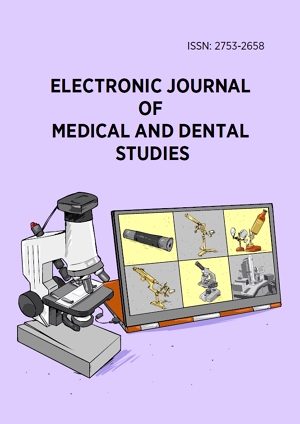Electronic Journal of General Medicine
Electronic Journal of General Medicine (Abbrev. Electron J Gen Med) is an English multidisciplinary peer-reviewed medical journal publishing articles in the fields of general medicine with ISSN 2516-3507. EJGM is published bimonthly and is an open access journal.
Current Issue
Volume 22, Issue 4, August 2025
(In Progress)
Original Article
Organizational behavior in the healthcare environment: A study of psychiatric services
ELECTRON J GEN MED, Volume 22, Issue 4, August 2025, Article No: em652
https://doi.org/10.29333/ejgm/16300Case Report
The diagnosis of LADA diabetes in a low-resource country: A Peruvian case series
ELECTRON J GEN MED, Volume 22, Issue 4, August 2025, Article No: em653
https://doi.org/10.29333/ejgm/16301Original Article
Effect of pilates exercise on quality of life in patients with sickle cell disease
ELECTRON J GEN MED, Volume 22, Issue 4, August 2025, Article No: em654
https://doi.org/10.29333/ejgm/16229Research Article
Evaluation of picky eating and chemosensory pleasure and their relationship with some variables among adults
ELECTRON J GEN MED, Volume 22, Issue 4, August 2025, Article No: em655
https://doi.org/10.29333/ejgm/16302Original Article
The predictors of prognostic nutritional index and its association with in-hospital mortality among critically ill geriatric patients
ELECTRON J GEN MED, Volume 22, Issue 4, August 2025, Article No: em656
https://doi.org/10.29333/ejgm/16303Original Article
Applying MTMM validity approach to differentiate between pain and discomfort measurements in patients with advanced cancer
ELECTRON J GEN MED, Volume 22, Issue 4, August 2025, Article No: em657
https://doi.org/10.29333/ejgm/16304



